This article was co-authored by Adrienne Youdim, MD. Dr. Adrienne Youdim is a Board Certified Internist specializing in medical weight loss and nutrition and founder and creator of Dehl Nutrition - a line of functional nutritional bars and supplements. With 10+ years of experience, Dr. Youdim uses a holistic approach to nutrition that blends lifestyle changes and evidence-based medicine. Dr. Youdim holds a BA from the University of California, Los Angeles (UCLA) and an MD from the University of California, San Diego (UCSD). She completed her residency training and fellowship at Cedars-Sinai. Dr. Youdim holds multiple board certifications awarded by the American Board of Internal Medicine, the National Board of Physician Nutrition Specialists, and the American Board of Obesity Medicine. She is also a Fellow of the American College of Physicians. Dr. Youdim is an Associate Professor of Medicine at UCLA David Geffen School of Medicine and an Assistant Professor of Medicine at Cedars-Sinai Medical Center. She has been featured on CBS News, Fox News, Dr. Oz, National Public Radio, W Magazine, and the Los Angeles Times.
There are 11 references cited in this article, which can be found at the bottom of the page.
This article has been viewed 99,858 times.
A ketogenic diet (also known as “nutritional ketosis”) is a high-fat, adequate-protein, low-carbohydrate diet. On a ketogenic diet, your brain uses ketones (a byproduct of your fat-burning metabolism) for fuel, instead of glucose.[1] Since humans can burn either glucose or ketones for energy, this change is possible to make, although there is some controversy surrounding ketogenic diets regarding both their efficacy and health benefit.[2] Ketosis keeps your body in a “fasting” or starvation metabolism, and consequently encourages weight loss by burning off fat reserves. While the shift to a ketogenic diet can be difficult initially, you should begin to see results after a few weeks.
Steps
Beginning a Ketogenic Diet
-
1Talk to your doctor. Although the ketogenic diet is grounded in medical and nutritional fact, there is not a universal opinion in the medical community that the diet is effective for weight-loss. Your personal doctor will be able to advise you if the diet is a good fit for you personally.
- Some sources view a ketogenic diet as an effective way to counter the symptoms of certain illnesses — such as epilepsy — rather than a weight-loss diet.[3]
- If you are pregnant or diabetic, work with your doctor so they can monitor and adjust your medications while you follow this diet. [4]
- People with kidney disease, such as hypertension, can experience problems with high-protein diets.[5]
-
2Recognize the possible risks of a ketogenic diet. A ketogenic diet — and putting your body into ketosis generally — presents risks for anyone who suffers from heart or kidney problems.[6] If you are at risk for heart disease or kidney disease, avoid ketogenic diets.
- A ketogenic diet prescribes moderate amounts of proteins, and large amounts of fats.
- A ketogenic diet will also add strain to your kidneys. Protein-heavy foods increase the amount of calcium in your urine. This, in turn, can strain your kidneys and lead to the development of kidney stones.
Advertisement -
3Start with a general low-carb diet like Atkins to ease yourself into nutritional ketosis. The Atkins diet is heavy on fats and proteins, low on carbohydrates, and will encourage your body to burn ketones for energy. Atkins is a decent “middle ground” between a regular diet (often high in carbs) and a low-protein ketogenic diet.
- This step is optional, but may make the transitional period into a ketogenic diet easier.
-
4Calculate your “macronutrients.” Macronutrients are nutrients which your body needs in large quantities, and they provide energy in the form of calories. Calculating your macronutrient intake will let you see the current levels of your fat consumption. With this information, you can decide how to reduce your carb and protein consumption, and increase your fat consumption.
- There are three types of macronutrients: fats, proteins, and carbohydrates. Fats provide more calories per gram than either proteins or carbs.
- There are many macronutrient calculators available online. You’ll need to input your height, weight, daily exercise, and dietary information.
Adjusting your Diet
-
1Eat as much as 20 or 30 grams of carbs daily. If you determine — through a macronutrient calculator — that you currently eat more than 30 grams of carbs daily, look for ways to decrease your carb intake. It’s crucial to avoid carbs on a ketogenic diet, as carbs easily convert into glucose, which keeps your body from burning ketones for energy.[7]
- You should only receive about 5–10% of your daily calories from carbohydrates, by eating about 20 – 30 grams a day.
- Focus on getting your carbs through salad greens and non-starchy vegetables only.
- Avoid carb-heavy foods like pasta and bread.
-
2Eat 2 – 8 ounces of protein several times a day. Protein is a necessary part of your diet, and without proteins, you will have very little energy. You may also feel hungrier or develop food cravings throughout the day. However, too much protein will diminish the weight-loss effects of a ketogenic diet.[8]
- You should aim to consume about 25 – 30% of your daily calories from proteins.[9]
- The amount of protein you eat will vary depending on how much protein you require as an individual. This is often tied to lifestyle, whether active or sedentary.
-
3Eat healthy fats with all your meals. Fats are the cornerstone of the ketogenic diet, and will encourage your body to burn fatty ketones for fuel.[10] Typically, calories from fat should comprise 80 – 90% of your meals.[11] (However, you cannot eat unlimited fats on a ketogenic diet; the calories can still add up and cause weight gain.[12] ) Examples of fatty foods include:
- Organic butter and lard
- Coconut oil
- Fatty cuts of organic, grass-fed meat.
- Egg yolks and full-fat sour cream
- Homemade mayonnaise
- Heavy whipping cream and cream cheese
- Avocados and bacon
- Nuts and nut butters
-
4Don’t stress too much about calories. Unlike many other weight-loss diets, you do not need to actively keep track of the number of calories in the dishes you eat while on a ketogenic diet. Since a ketogenic diet reduces food cravings throughout the day, you’ll likely be less motivated to eat excess calories anyway.[13]
- If you do want to track your calories, use the following breakdown as a guide (assuming that you’ll consume about 1,500 calories a day):[14]
- 1,050 calories from fat
- 300 calories from protein
- 150 calories from carbohydrates
-
5Stay hydrated. Once your body is in ketosis, your kidneys will begin to release excess water which your body had been retaining. This retained water is a consequence of a high-carb diet, and once you reduce your carb intake, water retention will decrease as well.[15]
- As a consequence, you may need to increase your daily water intake to avoid dehydration.
- Headaches and muscle cramps are a sign of dehydration. You may also need to increase mineral intake, especially salt and magnesium, as these are often lost when your body gets rid of retained water.[16]
Losing Weight on Your Diet
-
1Use a ketone meter to test whether you are in ketosis. A ketone meter will measure a small sample of your blood, calculate your blood sugar, and will inform you if your body is in ketosis.
- Certain ketone meters test urine rather than blood; however, testing your blood is more accurate than testing your urine.
- Ketone meters are commonly for sale at drug stores, and also online.
- If you are in ketosis, your body will burn its fat reserves, and you will begin to notice weight loss.[17]
-
2Look for ketosis symptoms (also known as “keto flu”). Within three to seven days of starting the diet, you may notice symptoms like: strong-smelling breath or urine; slight nausea; high energy and mental clarity; fatigue; or diminished appetite with no cravings.[18]
- If these symptoms last longer than a week, or increase in severity, you should visit your doctor. Severe nausea can lead to vomiting and dehydration, which are unhealthy when continued for multiple days.
- Many of these symptoms will vanish once you become keto-adapted.
- This symptom analysis can be performed in place of testing, if you are limited financially or do not want to test your blood or urine.
-
3Notice that your health has improved (after a few weeks). This should also be accompanied by weight loss, and any bloating or inflammation which you had previously experienced will have improved greatly.
- Ketogenic recipes are readily available online. Search online for various keto-friendly sites.
- Search in Pinterest (or similar apps) for good ketogenic recipes.
- Common recipes include rich “fat bomb” desserts, low-carb sandwiches, and light meals with avocado and salmon.[19]
Lists of Foods to Eat and Avoid and Weekly Meal Plan
Expert Q&A
Did you know you can get expert answers for this article?
Unlock expert answers by supporting wikiHow
-
QuestionHow do I start a ketogenic diet to lose weight?
 Adrienne Youdim, MDDr. Adrienne Youdim is a Board Certified Internist specializing in medical weight loss and nutrition and founder and creator of Dehl Nutrition - a line of functional nutritional bars and supplements. With 10+ years of experience, Dr. Youdim uses a holistic approach to nutrition that blends lifestyle changes and evidence-based medicine. Dr. Youdim holds a BA from the University of California, Los Angeles (UCLA) and an MD from the University of California, San Diego (UCSD). She completed her residency training and fellowship at Cedars-Sinai. Dr. Youdim holds multiple board certifications awarded by the American Board of Internal Medicine, the National Board of Physician Nutrition Specialists, and the American Board of Obesity Medicine. She is also a Fellow of the American College of Physicians. Dr. Youdim is an Associate Professor of Medicine at UCLA David Geffen School of Medicine and an Assistant Professor of Medicine at Cedars-Sinai Medical Center. She has been featured on CBS News, Fox News, Dr. Oz, National Public Radio, W Magazine, and the Los Angeles Times.
Adrienne Youdim, MDDr. Adrienne Youdim is a Board Certified Internist specializing in medical weight loss and nutrition and founder and creator of Dehl Nutrition - a line of functional nutritional bars and supplements. With 10+ years of experience, Dr. Youdim uses a holistic approach to nutrition that blends lifestyle changes and evidence-based medicine. Dr. Youdim holds a BA from the University of California, Los Angeles (UCLA) and an MD from the University of California, San Diego (UCSD). She completed her residency training and fellowship at Cedars-Sinai. Dr. Youdim holds multiple board certifications awarded by the American Board of Internal Medicine, the National Board of Physician Nutrition Specialists, and the American Board of Obesity Medicine. She is also a Fellow of the American College of Physicians. Dr. Youdim is an Associate Professor of Medicine at UCLA David Geffen School of Medicine and an Assistant Professor of Medicine at Cedars-Sinai Medical Center. She has been featured on CBS News, Fox News, Dr. Oz, National Public Radio, W Magazine, and the Los Angeles Times.
Board Certified Internist First, make sure you don't have any medical conditions that could make this diet potentially dangerous. Diabetics, particularly if they're on insulin or medications to reduce blood sugar, should be mindful of a dramatic reduction in carbohydrate intake. People with kidney disease can also find high-protein diets problematic. Generally, if you have a chronic medical condition you should be mindful and vigilant before starting the keto diet. However, if you experience keto-flu symptoms like dehydration and electrolyte problems long-term, you should also consult your doctor.
First, make sure you don't have any medical conditions that could make this diet potentially dangerous. Diabetics, particularly if they're on insulin or medications to reduce blood sugar, should be mindful of a dramatic reduction in carbohydrate intake. People with kidney disease can also find high-protein diets problematic. Generally, if you have a chronic medical condition you should be mindful and vigilant before starting the keto diet. However, if you experience keto-flu symptoms like dehydration and electrolyte problems long-term, you should also consult your doctor. -
QuestionWhat are the benefits of a ketogenic diet?
 Lyssandra GuerraLyssandra Guerra is a Certified Nutrition & Wellness Consultant and the Founder of Native Palms Nutrition based in Oakland, California. She has over five years of nutrition coaching experience and specializes in providing support to overcome digestive issues, food sensitivities, sugar cravings, and other related dilemmas. She received her holistic nutrition certification from the Bauman College: Holistic Nutrition and Culinary Arts in 2014.
Lyssandra GuerraLyssandra Guerra is a Certified Nutrition & Wellness Consultant and the Founder of Native Palms Nutrition based in Oakland, California. She has over five years of nutrition coaching experience and specializes in providing support to overcome digestive issues, food sensitivities, sugar cravings, and other related dilemmas. She received her holistic nutrition certification from the Bauman College: Holistic Nutrition and Culinary Arts in 2014.
Certified Nutrition & Wellness Consultant Eating a ketogenic diet allows your body to burn more energy from fat as opposed to glucose (sugar), which can help you lose more weight. A ketogenic diet can also increase energy and help you focus longer and be able to work out longer. It can also help you break away from sugar and carbohydrate cravings.
Eating a ketogenic diet allows your body to burn more energy from fat as opposed to glucose (sugar), which can help you lose more weight. A ketogenic diet can also increase energy and help you focus longer and be able to work out longer. It can also help you break away from sugar and carbohydrate cravings.
Warning
- Nutritional ketosis should not be confused with ketoacidosis, a dangerous diabetic condition.[22]
- You may experience some hair loss when beginning a Ketogenic diet. This is because your body is adjusting to your diet change. Consult a doctor if your hair loss persists after 3 months on this diet.
- Weight gain may occur after stopping keto diet. To prevent it, you have to stop keto diet slowly and reintroduce carbs gradually.
References
- ↑ Lyssandra Guerra. Certified Nutrition & Wellness Consultant. Expert Interview. 25 March 2020.
- ↑ https://www.hsph.harvard.edu/nutritionsource/healthy-weight/diet-reviews/ketogenic-diet/
- ↑ Adrienne Youdim, MD. Board Certified Internist. Expert Interview. 11 September 2020.
- ↑ https://link.springer.com/article/10.1186/1471-2393-13-109
- ↑ Adrienne Youdim, MD. Board Certified Internist. Expert Interview. 11 September 2020.
- ↑ https://www.hsph.harvard.edu/nutritionsource/healthy-weight/diet-reviews/ketogenic-diet/
- ↑ https://www.hsph.harvard.edu/nutritionsource/healthy-weight/diet-reviews/ketogenic-diet/
- ↑ http://ketodietapp.com/Blog/post/2013/04/22/Not-Losing-Weight-on-Low-Carb-Ketogenic-Diet-Dont-Give-Up-and-Read-Further
- ↑ http://www.ketogenic-diet-resource.com/ketogenic-diet-plan.html
- ↑ Lyssandra Guerra. Certified Nutrition & Wellness Consultant. Expert Interview. 25 March 2020.
- ↑ https://www.hsph.harvard.edu/nutritionsource/healthy-weight/diet-reviews/ketogenic-diet/
- ↑ http://ketodietapp.com/Blog/post/2013/04/22/Not-Losing-Weight-on-Low-Carb-Ketogenic-Diet-Dont-Give-Up-and-Read-Further
- ↑ http://www.ruled.me/counting-calories-on-ketogenic-diet/
- ↑ http://www.ketogenic-diet-resource.com/calorie-counting.html
- ↑ http://www.ketogenic-diet-resource.com/ketogenic-diet-plan.html
- ↑ http://www.ketogenic-diet-resource.com/ketogenic-diet-plan.html
- ↑ http://ketodietapp.com/Blog/post/2013/04/22/Not-Losing-Weight-on-Low-Carb-Ketogenic-Diet-Dont-Give-Up-and-Read-Further
- ↑ Adrienne Youdim, MD. Board Certified Internist. Expert Interview. 11 September 2020.
- ↑ http://www.ruled.me/best-keto-recipe-roundup-of-2014/
- ↑ https://www.ncbi.nlm.nih.gov/books/NBK499830/
- ↑ Lyssandra Guerra. Certified Nutrition & Wellness Consultant. Expert Interview. 25 March 2020.
- ↑ http://www.ketogenic-diet-resource.com/ketogenic-diet-plan.html
About This Article
If you want to start a ketogenic diet for weight loss, limit how many carbs you're eating so they make up only 5-10% of your daily caloric intake. You should also include protein in your diet, which will help you avoid food cravings throughout the day. Aim to eat 25-30% of your daily calories in protein. The majority of your diet should be made up of fats, so eat a lot of foods like avocados, nuts, fatty meats, and egg yolks. If you eat like this for several days, your body should enter ketosis and start shedding water weight. To learn more about the risks of a ketogenic diet from our Dietitian co-author, keep reading!

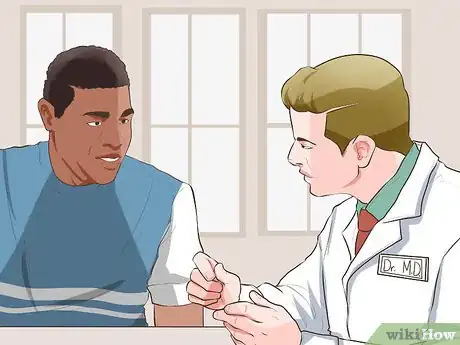

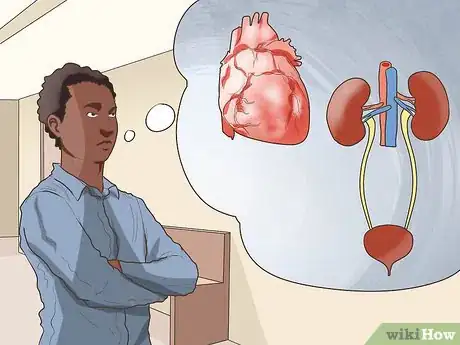

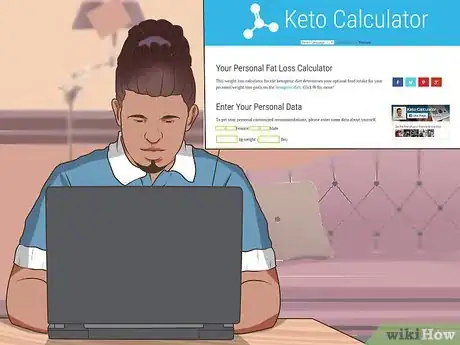
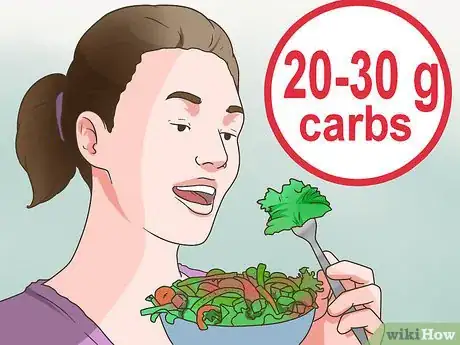
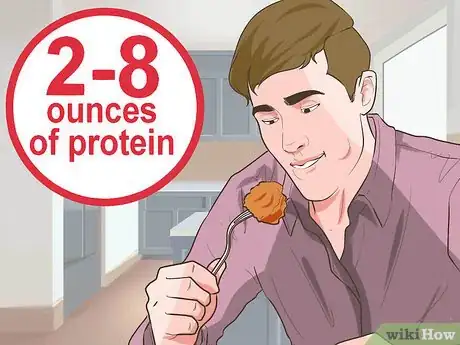
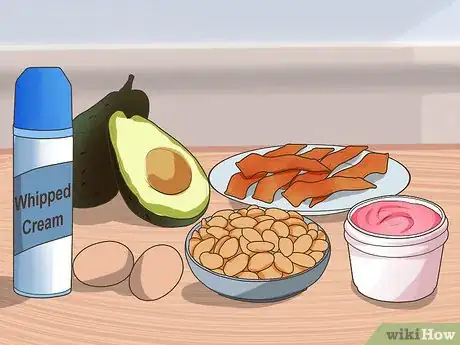
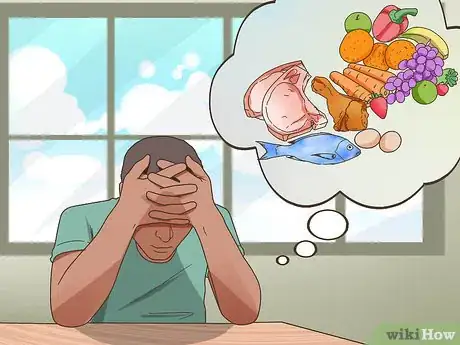
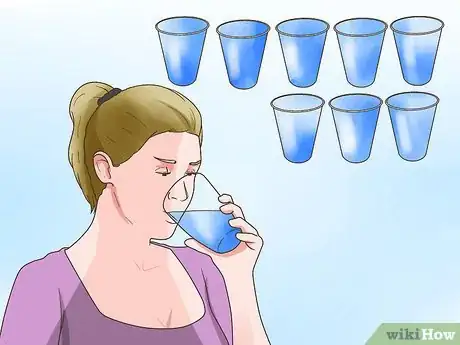
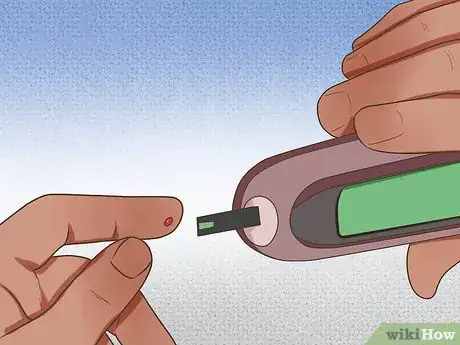
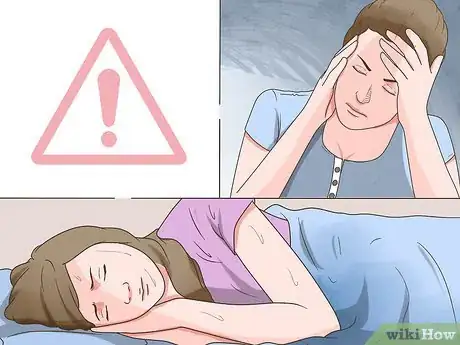
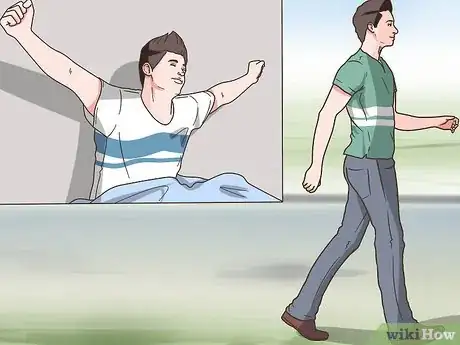
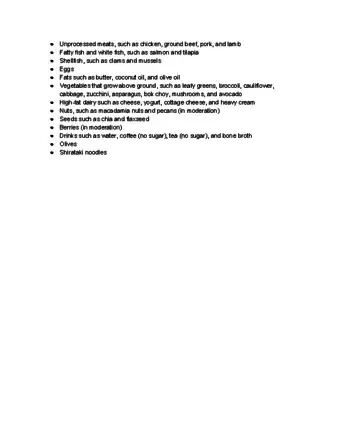
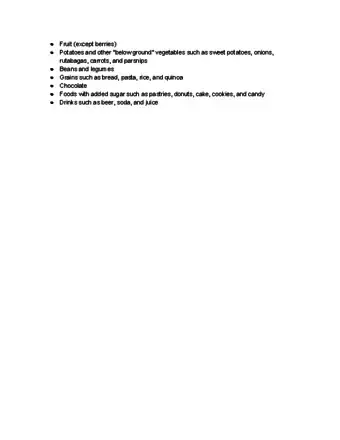

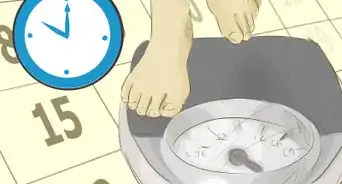

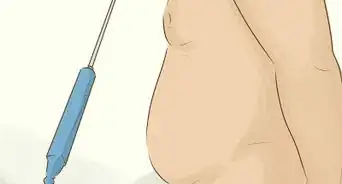





-Plan-to-Do-Step-17.webp)












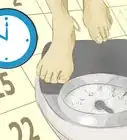
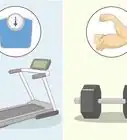
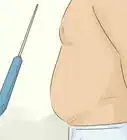
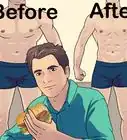



































Medical Disclaimer
The content of this article is not intended to be a substitute for professional medical advice, examination, diagnosis, or treatment. You should always contact your doctor or other qualified healthcare professional before starting, changing, or stopping any kind of health treatment.
Read More...